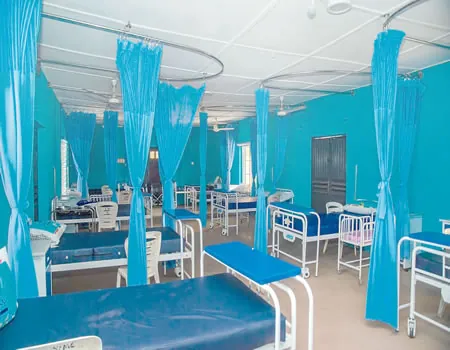By Isaac Atunlute
Across many Nigerian communities, primary health centres (PHC) are the first point of medical contact. Yet for years, they’ve been crippled by power outages, underfunding and a shortage of skilled staff—leaving residents to seek care elsewhere or go without.
But in Oyo State, a change in rural health is quietly taking root.
In a statewide effort to revamp basic healthcare, the Oyo State Government is upgrading 66 PHCs across 33 local governments.
Each facility is being equipped with standard medical supplies, solar power kits, electronic medical records, and sanitary waste disposal—marking a strategic shift towards community-based healthcare delivery.
This initiative follows the earlier renovation of 200 PHCs, and is part of a mission to restore trust in public health infrastructure, particularly in underserved rural areas.
Each of the 66 facilities is fitted with 10 KVA solar inverter sets with lithium batteries to guarantee uninterrupted power supply; two digital tablets preloaded with electronic health record software; red-brick incinerators for safe medical waste disposal; and a full diagnostic and emergency care kit stocked with glucometers, haemoglobinometers, paediatric BP cuffs, nebulisers, oxygen cylinders, and autoclave systems for sterilisation.
Additionally, the state has recruited more than 3,000 health workers to tackle the deficit of human resources in PHCs.
And to avoid frequent stock-outs of essential drugs, the government will implement a drug revolving fund, an effective mechanism for delivering essential drugs, already operational in states such as Kano and Osun.
Professor Temitope Alonge, managing director of First Health Dynamic Synergy International Limited, noted that the 66 centres were selected based on population covered and infrastructure readiness.
Learning from success
Oyo’s integrated approach mirrors lessons from other Nigerian states that have reaped considerable success from investing in PHCs.
In Ekiti State, for instance, a solar-powered PHC launched in 2022 led to a 40% decline in maternal deaths in several of its communities.
Kaduna’s use of Geographic Information System (GIS) mapping to identify high-priority PHCs helped guide smarter investment in maternal and child healthcare, particularly in far-flung areas.
Meanwhile, Ondo State’s Abiye Safe Motherhood Project, combining free maternal care with mobile “health rangers,” achieved an 85% reduction in maternal mortality between 2009 and 2016.
These examples, like Oyo’s, reveal an insight: that sustainable health benefits start with well-supported, community-based PHCs rather than possibly sprawling urban hospitals.
Oyo’s pursuit of rejuvenation is also creating local self-determination. At the Olorisa-Oko PHC in Akinyele, for instance, local leaders pledged to ensure security and protection to health workers so that it becomes self-sustaining.
Such local commitment is a change in attitude from viewing health centers as government facilities to being community-owned lifelines.
While the outcomes may not be instantaneous, with constant power, trained personnel, electrical gadgets, and drugs on the shelves, Oyo is shifting public perspectives about state infrastructure.
As other states look to strengthen their healthcare systems, Oyo’s example show that even modest, co-ordinated investments can spark a large transformation.






